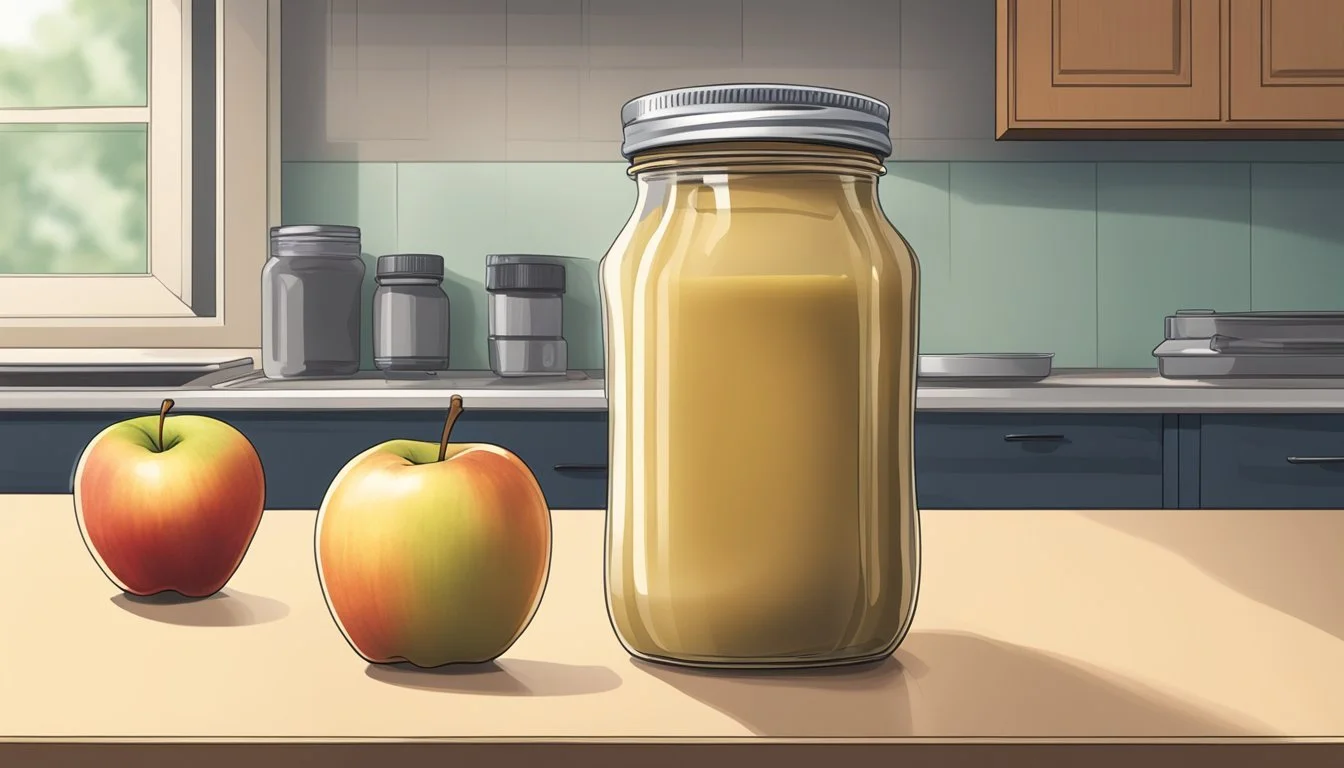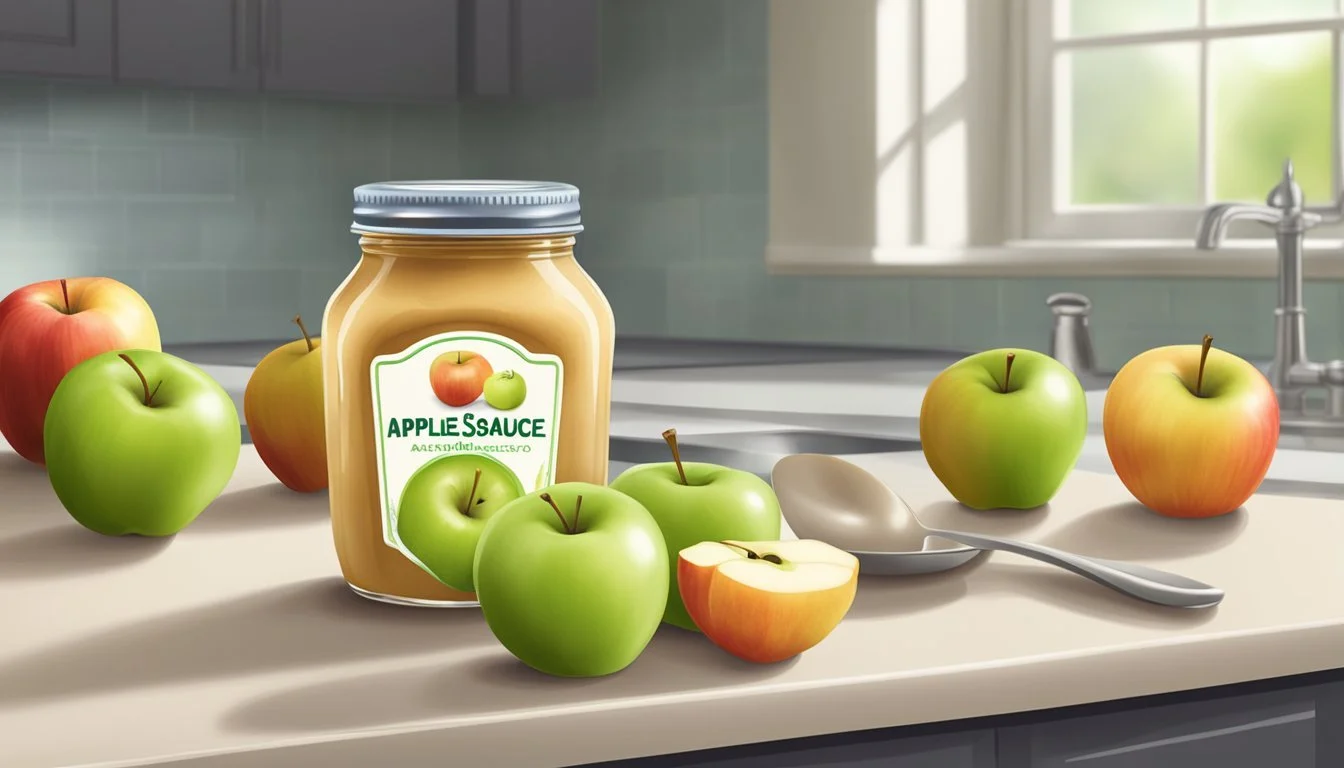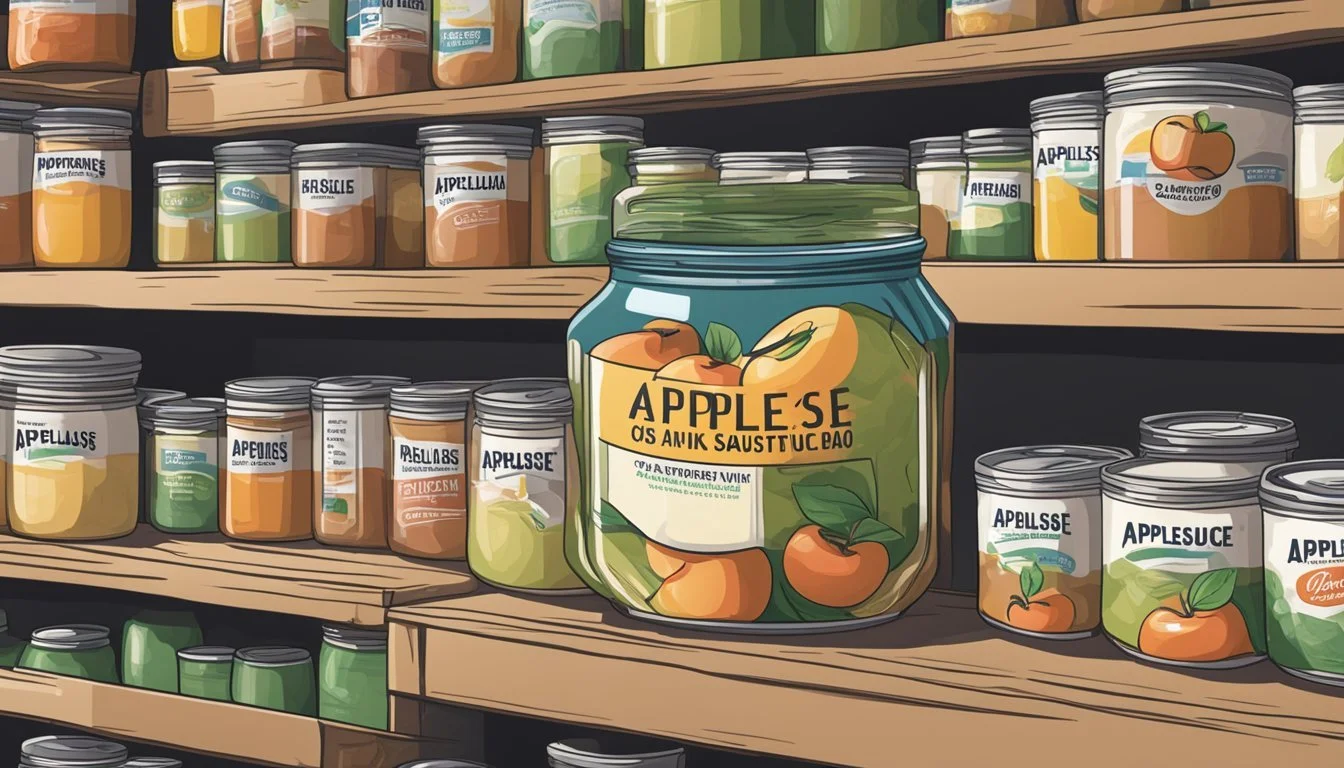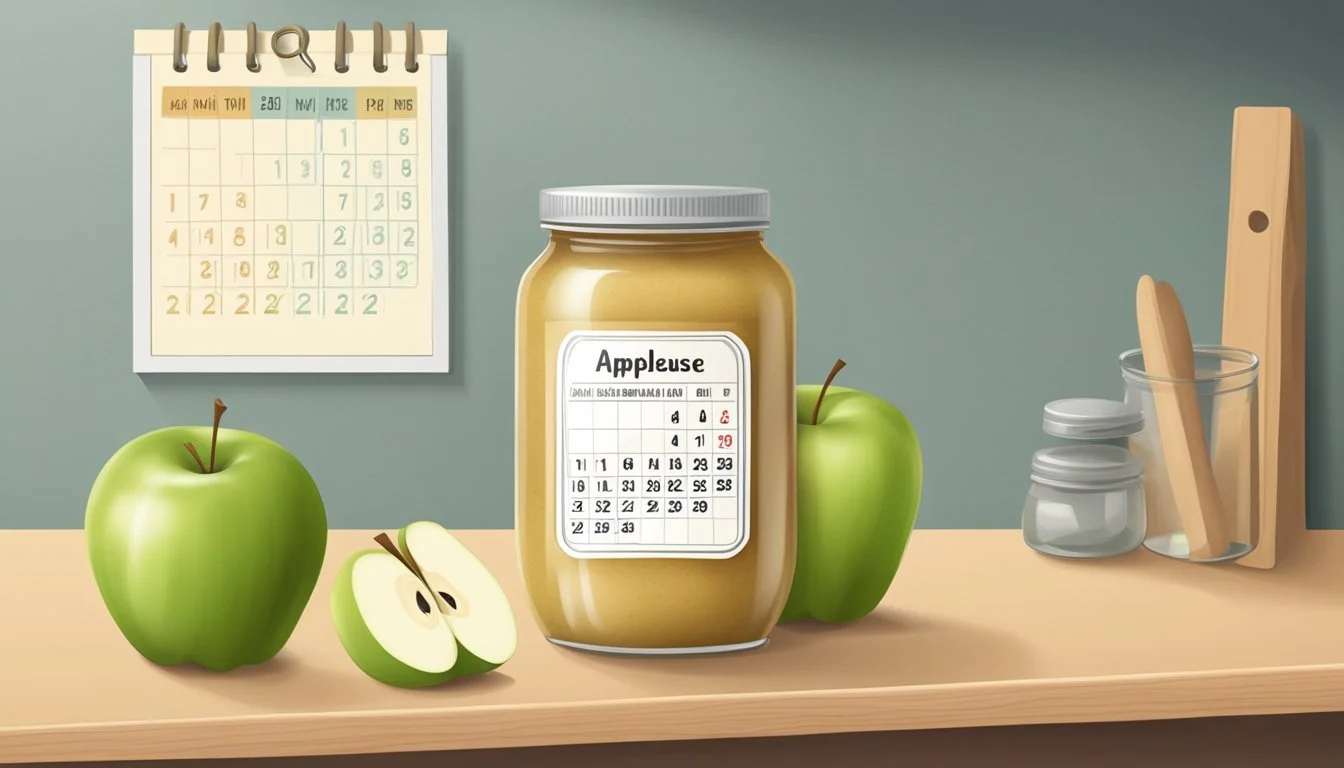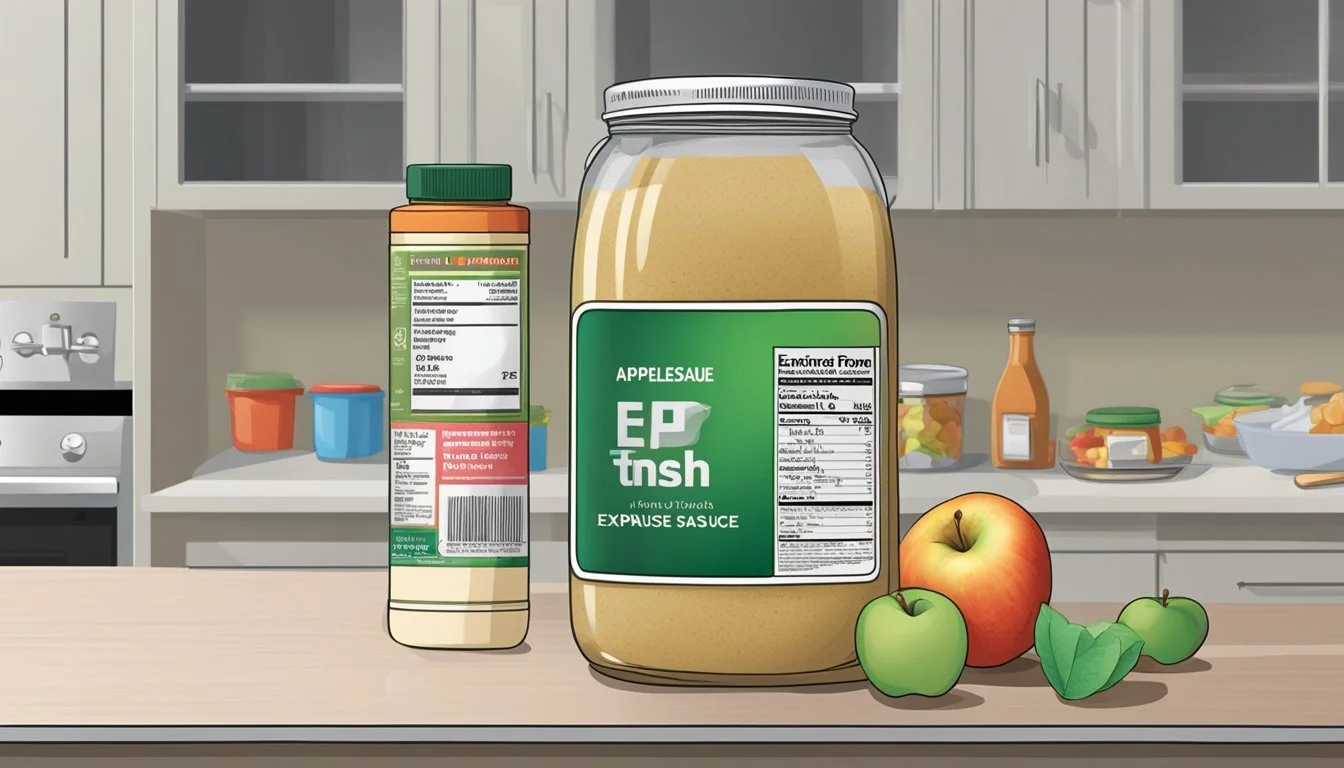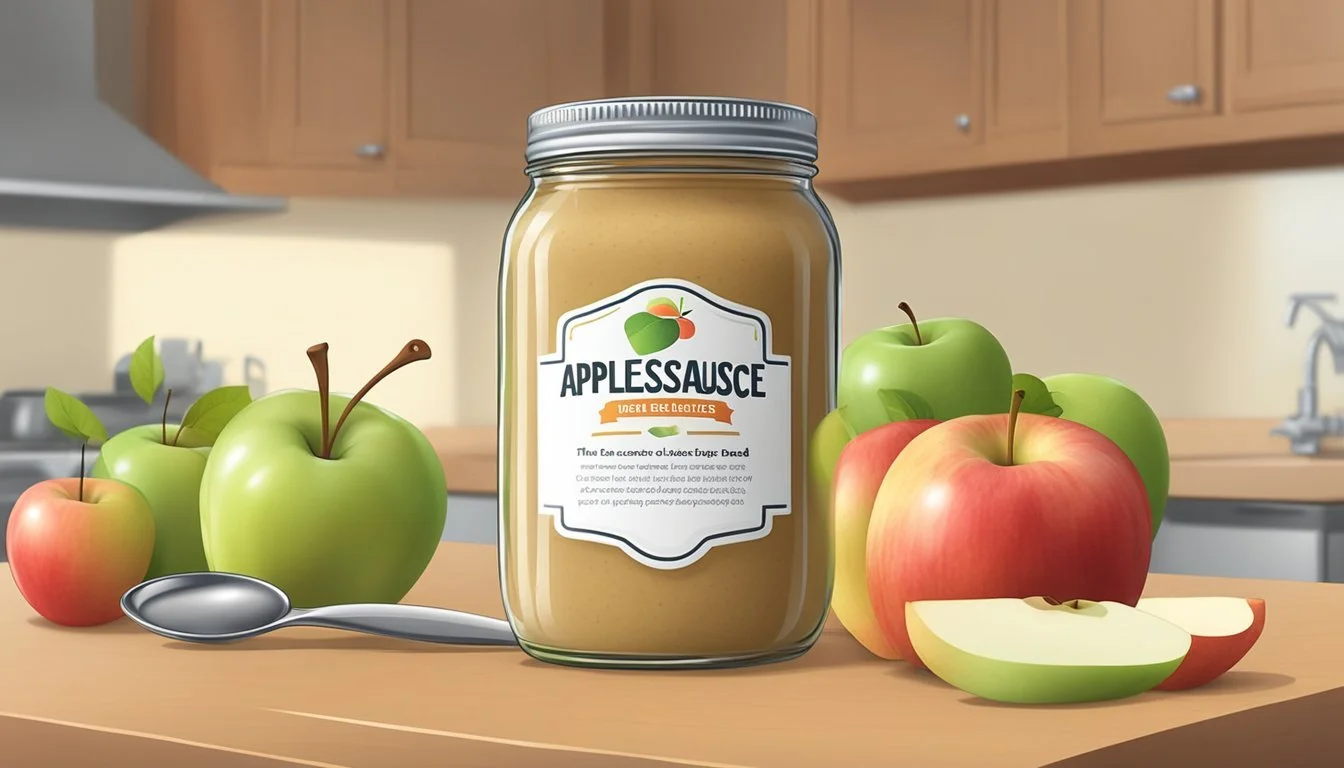Does Applesauce Go Bad?
Understanding Shelf Life and Spoilage Signs
Applesauce, a staple in many pantries, is enjoyed for its sweet, comforting taste and versatility. Yet, like most food products, applesauce is susceptible to spoilage. The quality of applesauce deteriorates over time due to factors like microbial growth and chemical changes, and its shelf life depends on storage conditions and whether it is homemade or commercially produced.
Commercially processed applesauce usually has a shelf life of one to two years when unopened and should be consumed by the best-by date for optimal quality. Once opened, it should be refrigerated and typically remains good for up to three weeks. Homemade applesauce has a shorter shelf life in the refrigerator and, for extended preservation, may be frozen where it can last for up to a year.
It is critical for consumers to understand the signs of spoilage, which include an off-odor, a change in color, and the presence of mold. These indicators mean the applesauce has gone bad and should be discarded to prevent foodborne illnesses. Proper storage is essential in maintaining the quality and safety of applesauce, and it should be stored in a cool, dark place and kept sealed when not in use.
Understanding Applesauce
Applesauce is a versatile and popular product derived from apples. It is widely consumed for its taste, nutritional benefits, and ease of use in various recipes.
Types of Applesauce
Homemade Applesauce: This type is made by cooking down apples until they are soft and then mashing or blending them to the desired consistency. The ingredients can include just apples, or a combination of apples, sugar, and spices like cinnamon and nutmeg.
Key Ingredients: Apples, optional sugar, spices.
Texture Varieties: Smooth, chunky.
Store-bought Applesauce: Commercially prepared applesauce is available in jars, cups, or pouches. It may contain preservatives to extend its shelf life and can come in various flavors and sugar content options.
Key Ingredients: Apples, water, ascorbic acid (vitamin C), and sometimes high-fructose corn syrup or other sweeteners.
Texture Varieties: Generally smooth, but texture can vary by brand.
Health Benefits
Applesauce is a source of dietary fiber, especially pectin, which aids digestion. It also supplies vitamin C and various antioxidants while being low in fat and cholesterol.
Dietary Fiber: Aids digestion and contributes to heart health.
Vitamin C: Important for the immune system, skin health, and more.
Common Uses in Dishes
Substitute in Baking: Applesauce can be used as a low-fat substitute for oil or butter in many baking recipes, such as muffins and cakes.
Recipes: Banana bread, brownies, pancakes.
Ingredient in Smoothies: For a natural sweetener and flavor boost, applesauce can be added to smoothies.
Smoothie Recipes: Pair with berries, bananas, and yogurt for a nutritious drink.
Complement to Breakfast Items: It serves as a flavorful topping for oatmeal, pancakes, and waffles.
Example: Serve warm applesauce over pancakes for added sweetness without using syrup.
Shelf Life and Storage
Applesauce's longevity hinges on whether it is store-bought or homemade and whether the packaging has been opened. Proper storage methods significantly extend its shelf life.
Unopened Shelf Life
Store-bought applesauce typically maintains its quality for 1 to 2 years when unopened and stored in a pantry. A cool, dark environment keeps it from degradation. It can last up to 18 months past its expiration date if the seal remains uncompromised and the storage conditions are optimal.
Opened Shelf Life
Once opened, applesauce should be transferred to an airtight container if not in one already. In the fridge, opened applesauce generally stays fresh for 5-7 days. Consumers may see variance in this timeline based on the preservatives used and the freshness of ingredients in homemade varieties.
Best Storage Practices
To maximize the shelf life of any applesauce, consumers should adhere to the following guidelines:
Pantry Storage: Keep unopened applesauce in a cool, dark place. Avoid exposure to direct light and sources of heat.
Refrigeration: Once opened, applesauce must be refrigerated and tightly sealed.
Freezing: Applesauce can be stored in the freezer for up to 3-4 months. Use an airtight container or freezer bag and leave room for expansion.
Sealed Packaging: Ensure the integrity of the applesauce's packaging to guard against exposure to air and contaminants.
By following these practices, the risk of spoilage is minimized, and enjoyment of the product can be extended significantly.
Detecting Spoilage
When applesauce has gone bad, specific spoilage indicators become evident. Recognizing these signs is crucial for ensuring the product's safety and quality before consumption.
Visual Indicators
One can observe visual signs of spoilage in applesauce, which includes the presence of mold growth or a noticeable change in color. If signs of mold appear, such as fuzzy spots of green, white, or black, the sauce should be discarded immediately to avoid health risks. A significant change from its original light yellow-green hue to a darker or brownish color also suggests that the applesauce has expired and should not be consumed.
Olfactory Indicators
The sense of smell is a reliable tool to detect spoilage. If the applesauce emits an off odor, which might be sour or fermented, it is an indication that the product has gone bad. Applesauce should have a fresh, fruity smell, and any deviation from this is a sign that it is no longer safe to eat.
Taste and Texture Changes
Although it is not recommendedt o taste applesauce if it shows other signs of spoilage, changes in taste and texture can be indicative of a spoiled product. The sauce may have a sour flavor or taste of fermentation, rather than the expected sweet and tangy apple flavor. In terms of texture, if the applesauce has become excessively watery or unusually thick, this change suggests it is time to discard the product.
Preservation Techniques
To retain the quality and extend the shelf life of applesauce, individuals may employ several preservation methods. Freezing, canning, and the addition of preservatives each play a role in maintaining freshness and preventing spoilage.
Freezing Applesauce
Freezing applesauce is an effective way to preserve its taste and nutritional value for an extended period. It should be packed in freezer-safe containers or ice cube trays for convenient portioning. Once frozen, the applesauce blocks can be transferred to a sealed bag to save space. When thawing, it is recommended to use refrigeration to maintain safety and flavor.
Canning and Pasteurization
Canning applesauce involves heating the sauce to a specific temperature and sealing it in sterilized jars, a process which effectively pasteurizes the product. Canning not only prolongs the applesauce shelf life beyond the best-by date but also ensures that it stays free from contaminants as long as the seal remains intact. Once opened, however, it should be refrigerated and consumed within a week or two for best quality.
Using Preservatives
Preservatives can be added to applesauce to inhibit microbial growth and extend its shelf life. Common preservatives such as ascorbic acid (vitamin C) keep the product stable even when stored in a pantry or refrigerator. It's important to note that preservatives should be used in accordance with food safety regulations to ensure the applesauce remains safe for consumption.
Health and Safety Considerations
When considering the health and safety aspects of applesauce, it is crucial to understand the risks associated with consuming expired products, the importance of preventing food poisoning, and the proper handling of leftovers to ensure safe consumption.
Consuming Expired Applesauce
Consuming expired applesauce may not always lead to illness; however, it is essential to inspect the product thoroughly if it is past its expiration date. Applesauce can undergo changes in color, texture, and smell, indicating spoilage. Any presence of mold, a sour scent, or an off taste necessitates immediate disposal of the product. Using a clean spoon every time can prevent cross-contamination.
Food Poisoning Prevention
To reduce the risk of food poisoning, one should always store applesauce, whether homemade or store-bought, in the refrigerator after opening. It should be stored in airtight containers—preferably glass jars or freezer-safe plastic containers—to maintain its quality and safety. If any damage to the packaging is detected, such as a compromised seal or leakage, the applesauce should be discarded to avoid the consumption of potentially harmful bacteria.
Handling Leftovers Safely
Leftover applesauce requires diligent care to ensure it remains safe to consume. Refrigeration is necessary, and storage in a clean container is paramount. When dealing with leftovers, adhere to the following practices:
Always refrigerate immediately: Leftover applesauce should be stored in the refrigerator within two hours of serving.
Use within recommended timeframes: Ideally, consume opened refrigerated applesauce within five to seven days to guarantee safety and freshness. Frozen applesauce can typically last for up to a year when kept at a consistent freezing temperature.
Label and date leftovers: Track how long applesauce has been stored by labeling with dates, to avoid eating leftovers that may have been kept too long.
By strictly following these health and safety guidelines, consumers can confidently enjoy applesauce without worry.
FAQs About Applesauce
This section addresses some of the most commonly asked questions about applesauce, including its shelf life, the distinction between best-by dates and expiration dates, and tips for using up excess or leftover applesauce.
Common Queries
Applesauce can spoil and its quality will vary depending on whether it's homemade or commercial, and how it's stored. An opened jar of applesauce should be consumed within a week to 10 days; beyond this period, one may notice an off smell, moldy appearance, or color changes indicating spoilage. When unopened, commercially canned applesauce typically lasts for 1 to 2 years when stored in a cool, dark place, but it's always prudent to check the best-by date on the brand's label.
Best Before Versus Expiration Dates
Best-by dates refer to the manufacturer's estimate of when the applesauce will be at its peak quality, while expiration dates are more closely related to food safety. If stored properly, applesauce may be safe to consume after the best-by date has passed, but its quality in terms of flavor and texture might diminish. For safety, if the appearance or odor of the applesauce seems off, it should not be eaten, regardless of the date printed on the container.
Creative Utilization Tips
Leftover applesauce need not go to waste; there are several creative ways to utilize it:
Cooked Dishes: Applesauce can be incorporated into recipes as a substitute for oil or butter in baking, or as an ingredient in meat sauces or marinades.
Maximize Shelf Life: To prolong its life, applesauce can be frozen in freezer bags or airtight containers for up to a year, making sure to label with the date of freezing. To defrost, place the frozen applesauce in the refrigerator for several hours or overnight.
Storage: Preserve the quality of applesauce by keeping it in a sealed container away from light and heat. Homemade applesauce should be stored in sterilized jars to maximize shelf life.
By following the appropriate storage methods and understanding the guidelines on best-by and expiration dates, consumers can safely enjoy applesauce and reduce food waste.

